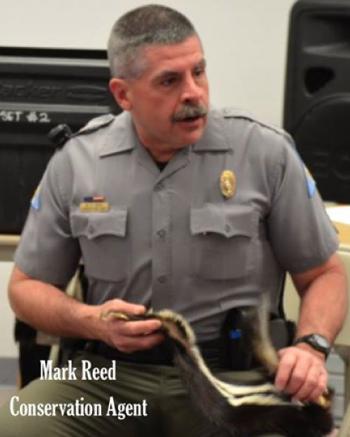
Submitted by Mark Reed
news@showmetimes.com
Stoddard County, Missouri - With 520,000 Missouri deer hunters and more than 2 million wildlife watchers, whitetail deer are obviously a very important resource to Missouri citizens. In addition, whitetail deer support 12,000 jobs and provide $1 billion annually to state and local economies. Whatever your connection to whitetail deer, you owe it to yourself and the deer herd to stay informed on the issues.
A couple of diseases have been in the news the past few years. EHD or blue tongue is a naturally occurring disease and is spread by biting flies. Blue tongue can occur any year but generally is worse during dry years. As water holes become scarce, deer congregate at remaining watering spots and the disease is spread faster. Blue tongue is often fatal with only about 20% of infected animals surviving the disease, however, it is a part of nature’s process to control population numbers. Deer that do survive may pass on genes which can strengthen the deer herd’s immunity to the disease.
Chronic Wasting Disease has hit the news in a big way the past few years. CWD is a 100% fatal disease and is caused by a prion. Now if you don’t know what a prion is or have never even heard the word, you are not alone. Most conservation employees I know had not heard the term before CWD began occurring in whitetail deer. Prions are impossible to kill with current technology so once a deer becomes infected, there is not a cure. CWD was first discovered in Colorado and has recently been found in north-central Missouri. The Department of Conservation has been working with private landowners, captive deer breeders and other concerned citizens to detect cases of the disease and slow its spread.
There are currently regulations in Missouri regarding bringing hunter-harvested deer, elk and moose carcasses into the state. Several states have enacted similar regulations aimed at reducing the chances of CWD infected carcasses being brought into the state and spreading the disease. If you travel to hunt, I recommend you keep up with these regulations in addition to permits and seasons. Since captive whitetail deer are also part of the equation, folks who have permits for these animals must meet cage requirements and other restrictions aimed at preventing escape and contact with the wild deer herd. These regulations protect Missouri’s deer herd as well as the captive deer breeders.
The Department of Conservation will be holding public meetings all around Missouri this summer to give citizens the opportunity to learn more about these topics and to voice their opinion.
Try to attend one of the meetings or go to www.mdc.mo.gov for more information. Whether you hunt whitetail deer in Stoddard County, make an occasional trip through Mingo to see deer along the route or just want to know that our natural resources are being properly managed, please do your best to be informed on the issue of deer disease and know what you can do to help.

